I'll admit I was excited when I heard Brompton were launching a gravel version of their iconic folding bikes - and I don't even have a commute these days.
But I do ride a lot of gravel, and I've a longstanding admiration for Brompton and their ingenious, dinky little folding bikes so the new G Line piqued my interest.
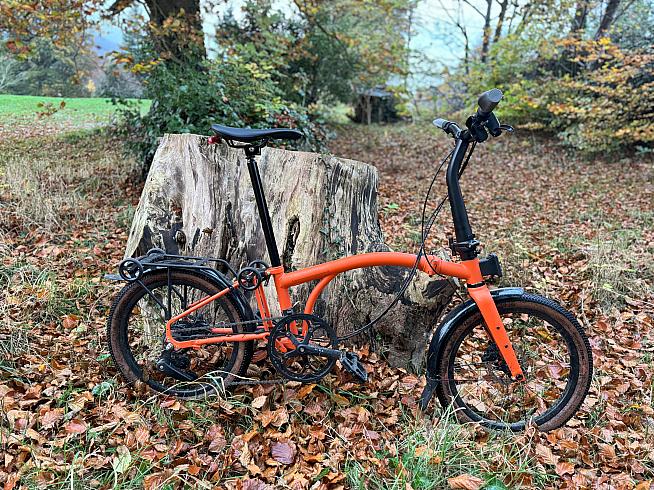
Unveiled earlier this year, the G Line - as Brompton have dubbed their new off-road machine - boasts disc brakes, larger 20" wheels (vs 16" in the original Bromptons) and eight-speed internal hub gearing, all in the foldable package that has earned the brand a legion of fans over the years.
Sportive.com was on the press list for review samples, albeit somewhere towards the bottom apparently: weeks passed by and I'd almost forgotten about the bike when a UPS van pulled up outside the house with a large box. Inside, curled in the foetal position and still speckled in genuine media-grade muck from the previous tester, was a flaming orange G Line.
It's been a long time since I rode a folding bike but I was excited: how would this thing ride?
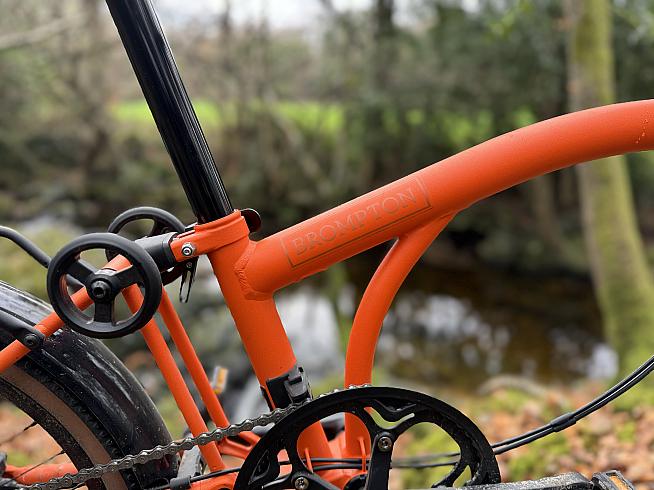
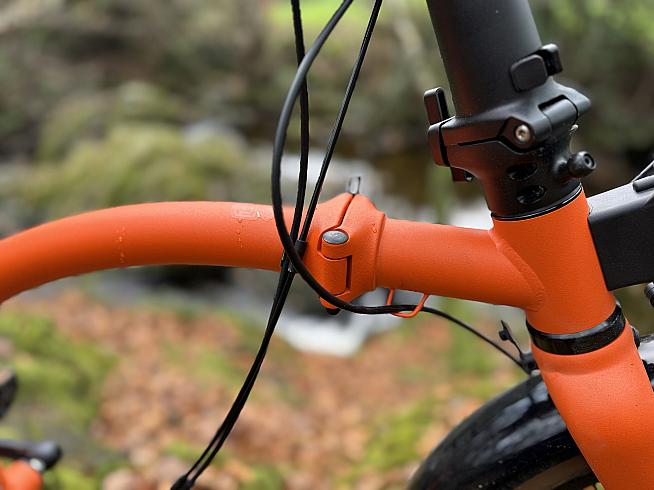
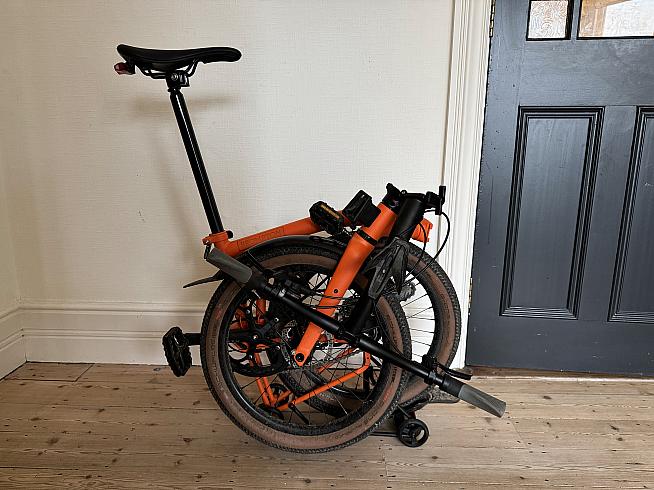
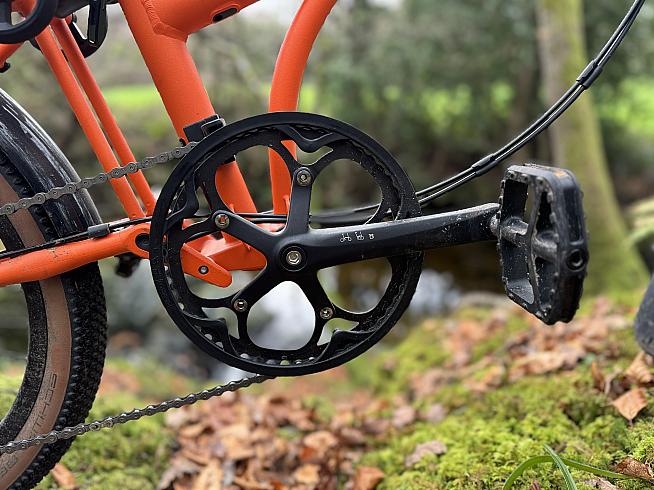
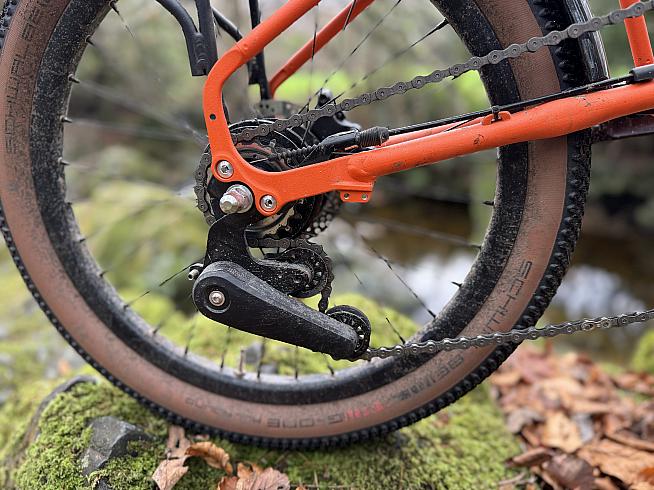
As a home-worker I don't have much of a commute these days, but memories of toting a folding bike on the train from Brighton for a ride across London three days each week remain fresh.
It wasn't a Brompton, that bike - the downtube said 'Cartella', a brand I've never seen before or since. I bought it second-hand from a woman in Shoreham who'd used it on caravan holidays. I grew to love it, despite a few little quirks including a pin in the frame hinge that would occasionally fly out when bumping over potholes, with hilarious consequences of trying to control a bike that was attempting to fold itself in half while trundling down Regent Street at dusk. I took to securing the pin with an elastic hairband, which did the trick.
A quick glance over the Brompton confirms that no back street bodges will be needed here: this thing has been engineered with an eye for detail and solidity. Converting from folded mode to ride-ready is a matter of moments, even for a rusty novice like myself. I was particularly taken by the quick release pedal, which pops out at the press of a button and slots into a hole on the headtube to keep it from bashing shins in folded mode.
A visual inspection revealed neat welds and all the clasps and folding mechanisms seem solid and sturdy. A minor point but when fitting a bottle cage to the stem I noticed the provided bolts were on the short side; I had to swap in a longer bolt to get my cage secure.
Apart from the striking colour, the first thing that hit me was the weight of the new Brompton. It's made of steel, so I didn't expect it to be lighter than my carbon gravel bike, but at 15.2kg with rack and mudguards fitted it's literally twice the weight.
To some extent that's reassuring heft for a bike designed not only to be piloted across gravel trails, but also abused on public transport systems. Put it this way, it feels like a bike that won't so much as break a sweat if it's dropped down an Underground escalator.
The good news is that the weight virtually disappears as soon as you jump in the saddle: suddenly you're aboard a nimble and surprisingly lively feeling bike with noticeably sharp steering and an eagerness to duck and dive through stationary traffic or rutted, rooty singletrack alike.
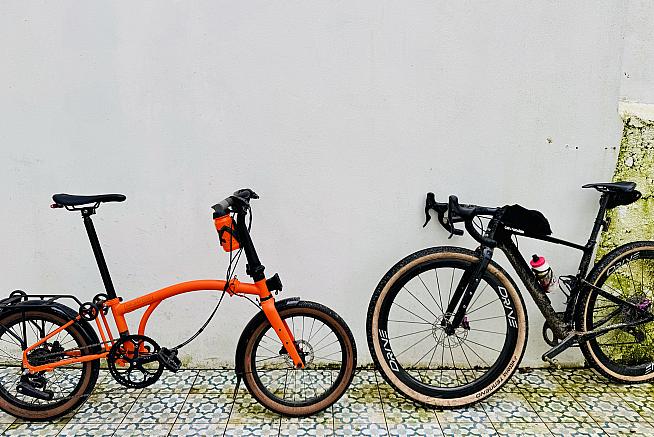
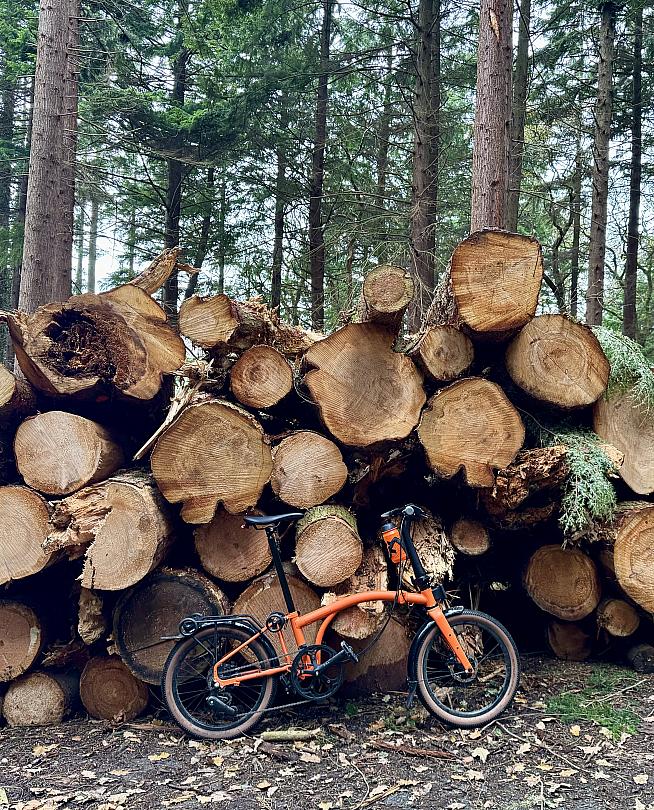
I took it for a maiden spin to the post office and then down a riverside path, marvelling at the bonkers handling compared to a "normal" bike. Turning up a leafy, mucky climb I had a chance to test the gear range and found it, if not quite equal to my usual 38-42 bottom gear, certainly capable enough for a decent short climb.
The path crossed a red MTB trail so I hopped on to that, pumping over the ramps and berms of the singletrack for a thrilling five minutes or so before emerging onto a gravel path.
It was a short test ride, but provided plenty of food for thought. First things first, the G Line is not a replacement for or equivalent to a standard gravel bike. Yes, Brompton market the G Line as "the first ever Brompton with the ride feel of a full-size bike," but I would advise taking this claim with a hefty pinch of salt.
Sure, the 20" wheels and disc brakes offer more assurance on the rough stuff than a normal Brompton, but it's still a far cry from 29" wheels and the stability of a full frame bike. If you're thinking "I can sell my gravel bike and my commuter and just use this!" I'd simply say, no.
As you would expect, the balance of the G Line is very different to a larger framed bike; it feels top-light, unsurprisingly given the low centre of gravity of that steel frame and mini wheels.
The flat bars compensate to some extent, restoring a little sense of control - and you might appreciate the ergo bar ends too. They provide a comfortable place to rest your hands which is especially welcome when the going gets choppy.
The G Line is available in three sizes, with our test bike being the medium size, and as far as I can see there is limited scope to adjust the fit once you've chosen your model. The long, very sturdy stem rises like a muscular swan's neck from the head-tube and is not adjustable - no swapping out a longer stem to increase the effective reach for example, or even lowering the bars to get a less upright position.
However, you can rotate the bars a bit to adjust reach by a couple of cm and I found that inverting them to drop the hand position actually improved things for me, especially with the backwards sweep of the bar. If the stock bars don't work for you, it would be simple enough to swap them out for something more suitable.
You can also flip the seatpost if you'd like the saddle to be set back rather than forwards, which may be useful for riders at the taller end of the size range for their model.
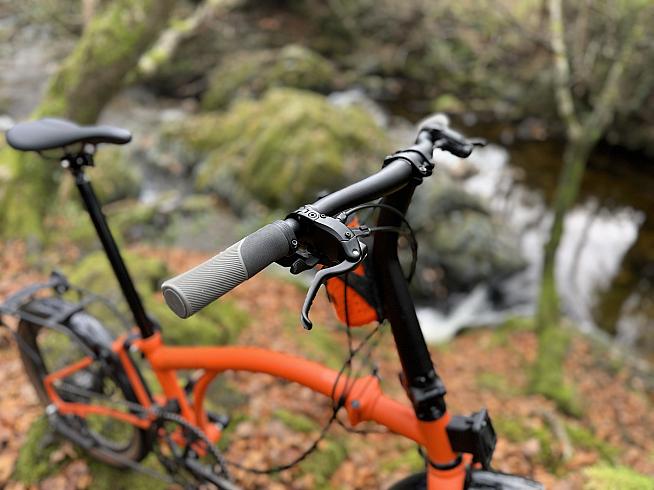
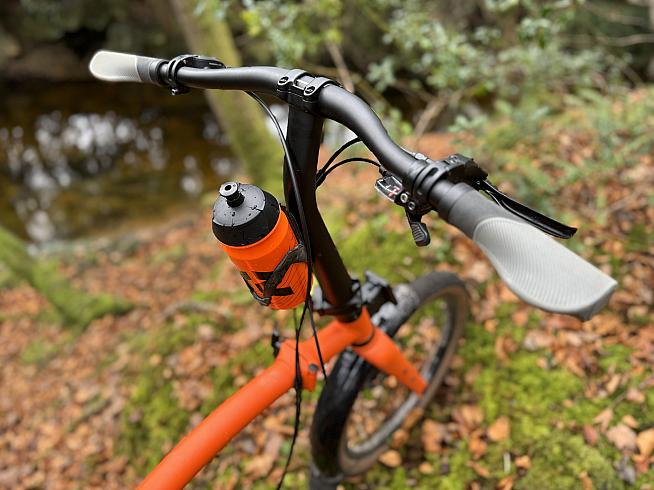
Once you've dialled in the fit of your Brompton, what are you going to do with your new folding gravel bike?
The target market would seem to be commuters, for whom a folding bike that meets the requirements for being taken on peak time trains or the Underground is a must. Something like the Brompton is an obvious choice. The trickier question is why this Brompton, over the standard models?
The spec sheet, is one answer: the hydraulic disc brakes are fantastic, and the 307% gear range offered by the Alfine eight-speed rear hub is enough to handle some pretty steep gradients while offering decent speed on the flat. If the bike section of your commute involves fairly extensive sections of unpaved terrain, I can see the appeal.
But otherwise, I'm not so sure that the G Line offers massive advantage over an M Line or other Bromptons. The disc brakes are great, but are they essential? On really technical stuff, won't most riders bump into the limits of the bike's geometry, small wheels and handling well before the limits of caliper brakes are reached?
These were the questions in my mind as I took the G Line out for a proper test ride. Following the principle that a borrowed saw can cut anything, I plotted a route up a gravel trail and into the hills on a climb typically frequented only by mountain bikers. A rough track some 2.2km in length, it has an average gradient of 11.7% rising to 20% in places, winding into a landscape whose claim to fame is featuring in Game of Thrones as the setting for the bleak lands north of The Wall.
It's not the sort of thing you're likely to find on your typical commute, but it seemed a good test of the Brompton's off-road credentials, both uphill and on the descent.
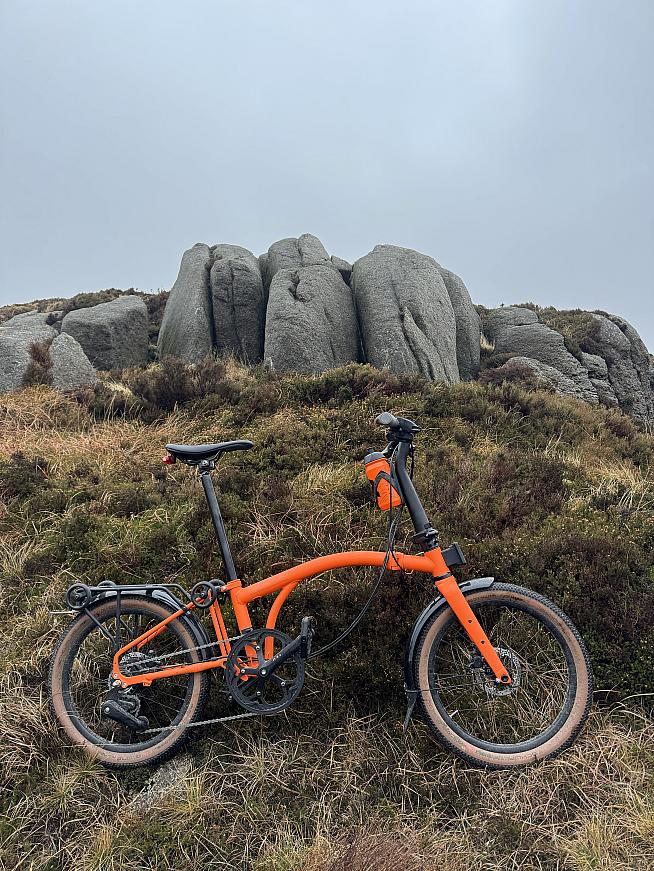
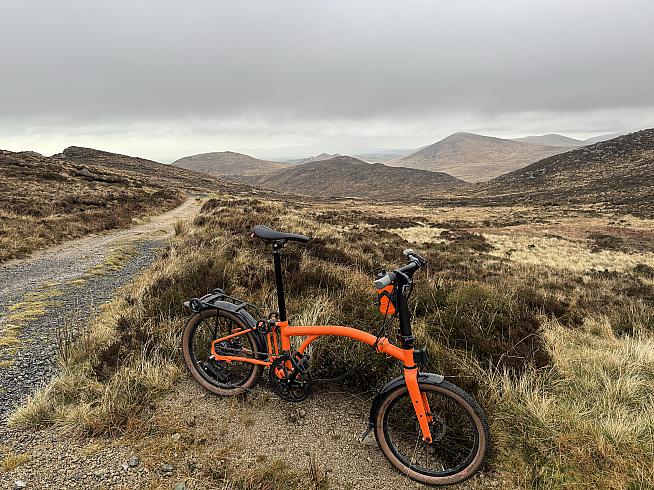
Much to my surprise, the G Line passed the test with flying colours. It wasn't my fastest effort on the climb, but it wasn't my slowest either and the bike picked its way up the rocky, gravel strewn track with aplomb. I expected the weight to be a factor, but it really wasn't noticeable, underscoring my impression that this bike feels lighter than it is - at least, until you come to pick it up.
The descent too was handled with surprising lack of drama, helped by the slightly more upright position and wider bars than on my usual gravel bike. And again, those hydraulic disc brakes really are excellent.
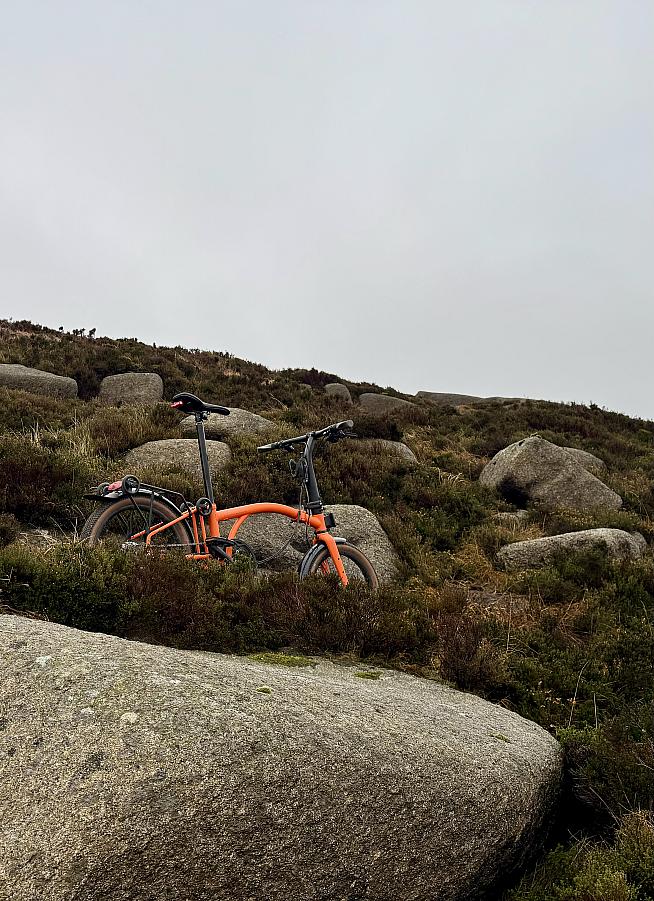
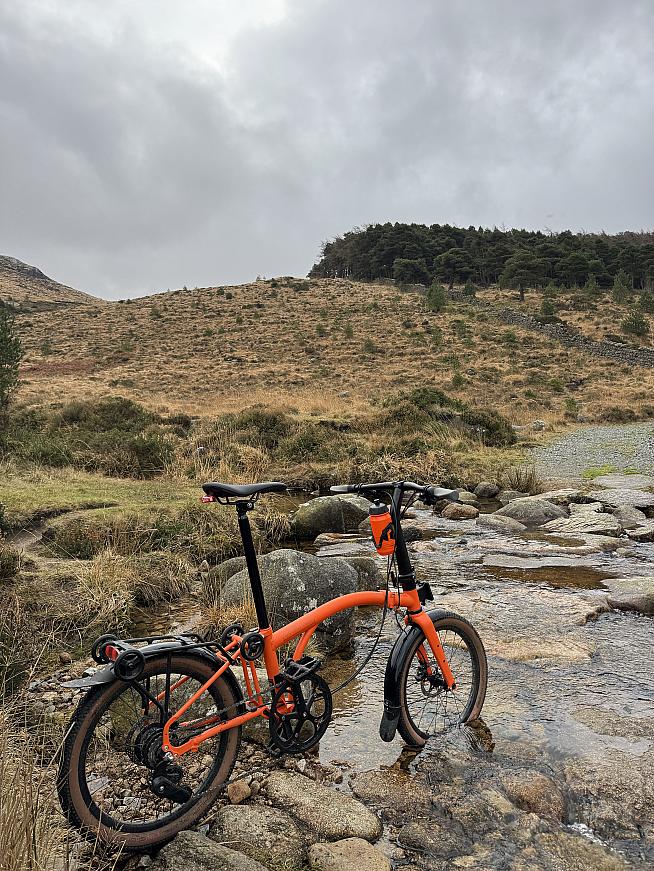
I found myself thinking that actually, this is a bike you really could take on a multi-day gravel expedition. You may have to work a little harder than on a lighter full-size bike, but if you're willing then the G Line is up to the job.
Back at home and once the endorphin high had faded, I found myself once again racked by uncertainty over this bike's inherent contradiction. It's a commuting bike that's less stowable than Brompton's other commuters; it's considerably more capable than those other Bromptons on rough terrain, yet still markedly less efficient than a dedicated gravel bike.
See? It's confusing.
The bigger wheels are an asset, it's true; but this comes at the price of a larger sized, heavier machine. And as sprightly as it feels to ride, it's a pig to carry around.
For commuting that's mostly fine as the bike glides along nicely on the roller frame rear rack when folded. But lifting it into an overhead rack on a train could be awkward, and the idea of lugging it up several flights of stairs in a train station for example, or to a first-floor apartment twice a day, really doesn't appeal.
It's a trade-off, ultimately: you gain added capability for rough terrain, while losing some of the easy portability that is essentially the Brompton's raison d'etre. Whether that trade-off is worthwhile will depend on how you plan to use your Brompton.
A final point of consideration is the price tag. The G Line retails at £2500, which is in line with Brompton's pricing in general; it seems that, as with VW vans, you pay a heavy "scene tax" for that Brompton badge.
I understand that for London commuters let's say, long accustomed to paying through the nose for their annual season ticket (sample price: 3x days per week Haywards Heath - London Victoria: £5088), the price of a Brompton amortized over five years of ownership mightn't raise an eyebrow.
But for the rest of us, it's a sum that will give pause. This may be the wrong thing to say in a bike review, but the fact is with a little digging in the used bike market, you can pick up something perfectly serviceable like the charmingly retro Raleigh Twenty folding bike for under £100. It may not have disc brakes, but stick some chunky rubber on those 20" wheels and setting aside a few quid for a service, you'll have most of the capability of the Brompton, with two grand spare to spend on a "proper" gravel bike for the weekends.
At the other end of the scale, if you do have a sizeable budget then something like the Atto from Austin Cycles is worth a look. A carbon fibre folding bike with 11-speed Shimano Alfine hub, 20" wheels, disc brakes and a maintenance-free belt drive, the Atto weighs in at just 9.8kg. The catch? It'll set you back £3,350, which does make the Brompton pricing look reasonable.
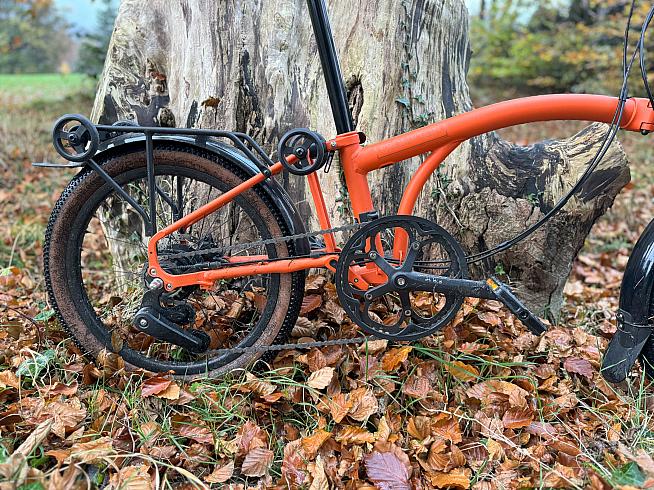
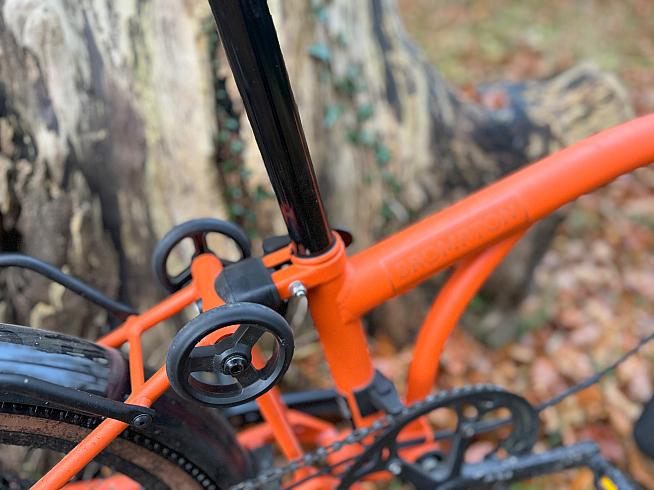
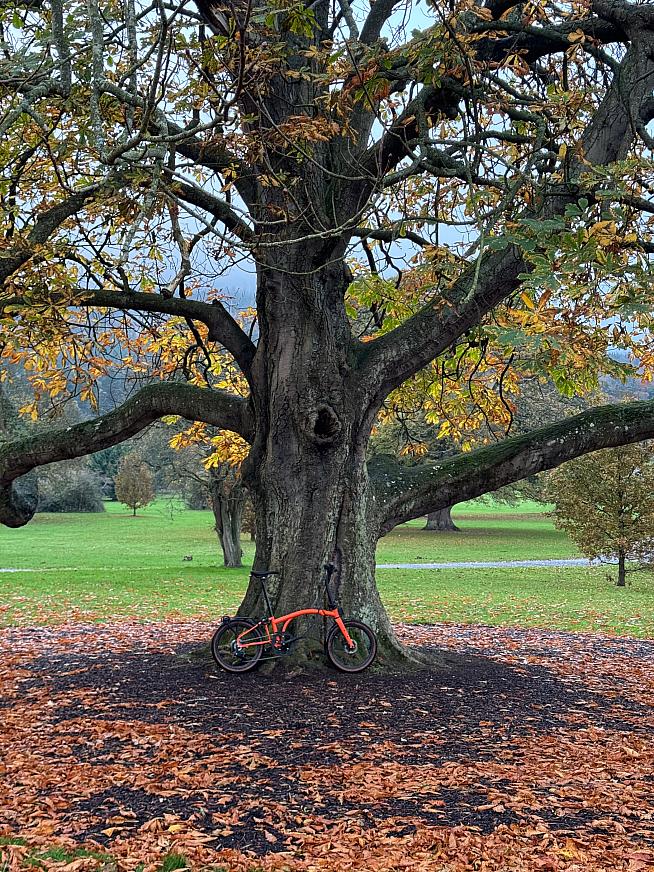
All caveats aside, I have to say I've really grown to like the G Line. Once I adjusted my expectations - and the handlebars - and accepted that the Brompton is not a like-for-like replacement for a tuned carbon gravel bike, I could appreciate the G Line for what it is: a robust, fun, nimble and surprisingly capable bike that you can take pretty much anywhere.
The shifting is crisp, the gear range is decent and hydraulic disc braking inspires confidence whether you're weaving among city traffic or escaping onto trails and towpaths.
The supplied Schwalbe G-One Allround tyres are a good choice, providing ample grip off-road without adding undue resistance on tarmac. The wheels and tyres are tubeless ready and if this were my bike I'd be immediately converting to tubeless. Brompton provide a useful short video setting out how to do the conversion.
It's quick and easy to fold and unfold, the orange colour is stunning and on the whole, it just puts a smile on your face. Brompton have an army of fans, and I can see a lot of people loving this bike.
If you can absolutely only have one bike, and you need that bike to be used as a daily commuter but also ready to tackle adventures off the beaten path, then the G Line absolutely fits the bill.
It's perhaps not the best tool for any one job, but think of the G Line as the Swiss Army Knife of the cycling world and you may just find this cheery bike is your new commute crush and more.
Brompton G Line with roller frame: £2499 from www.brompton.com
0 Comments





